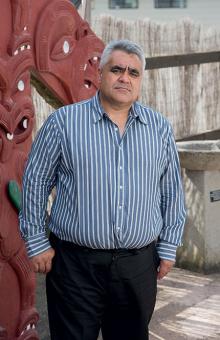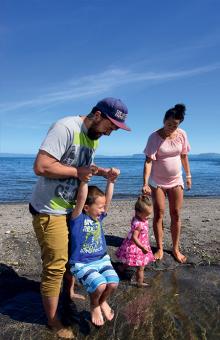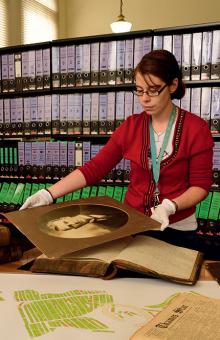Advertisement
On a grassy knoll on the flanks of Scandinavian Hill, about a half an hour’s drive from Hokitika, sits one of the most tranquil cemeteries I’ve ever set foot in. Wild flowers swim amongst untended, knee-high grass, birds chirp from surrounding regenerated bush. Crumbling, sombre-grey headstones and rusting wrought iron fences denote the neglected burial plots of the cemetery’s residents, lying at rest here untroubled for more than a century.
The twin towns of Stafford and Goldsborough were the scene of a population explosion when gold was first discovered in the Waimea Creek in 1865. Some 5,000 diggers moved into the district, set up camp in the primeval beech forest and fashioned the two shanty towns in a matter of days. One of those diggers was my great-great-grandfather, John Quinn. He had followed in the footsteps of a brother, who had earlier staked a claim near Piper’s Flat and over several months won a fortune on the gold field.
John wasn’t so lucky, succumbing to a common miner’s ailment, the lung disease known as 'miner’s phthisis' or silicosis, after years of inhaling abrasive dust. He was dead by the age of 43, leaving behind a wife, Margaret, and seven children. They buried him in the Catholic section of the Stafford cemetery, amongst the Kellys and Fitzgeralds, in the spring of 1877.
His brother, Patrick Quinn of Arahura, is recorded as the informant on his death certificate.
Soon after, residents of both gold towns upped sticks and moved on, leaving their dead behind and this cemetery, the oldest on the West Coast, is one of the few vestiges from that period. Now it sits overlooking bucolic pastoral land, showing little evidence this valley once boasted 17 stores, 37 hotels, a school, a court house, a police station and four churches. All of that is long gone.
So, too, was the memory of my ancestor, entombed in an unmarked grave in long forgotten surroundings. Then, a few years ago, I made a random search of the Quinn family name on the National Library’s website, Papers Past. The site has a keyword-searchable digitised version of more than four million pages of New Zealand newspapers and periodicals dating back to 1839. The resulting discovery threw up a not uncommon listing on the pages of the West Coast Times in 1896 for the renewal of a hotel liquor licence, by the widow of Patrick Quinn. That led me to inquire, with the Hokitika Museum, after the pub and its owners.
The museum offers a research service for historians and genealogists and one of the archivists instantly recalled seeing a booklet in their reference library on the history of a Quinn family, written by a descendant of Patrick and his wife Annie. They even supplied a contact for the author, living in Wellington.
Through him, I was able to discover that Patrick had an older brother, John, and was also provided contact for another relative who had been tracing the family line on the Family Search website, run by The Church of Latter Day Saints. That’s when the benefit of a community of genealogy sleuths became apparent, and a treasure chest of otherwise obfuscated historical records and facts about the Quinns was made known to me, including a family tree dating back to the patriarchal ancestors in Tipperary, Ireland.
This summer, I returned to that peaceful west coast setting with my own children and grandson and pointed out for them the spot denoted on the Stafford cemetery records, held by the museum, where John Quinn was interred. For some, it may seem a frivolous exercise, searching, often fruitlessly, for traces of a distant lineage. But I can attest that knowing something of one’s family story can also provide a valuable context for your own life journey. I’d also like to think that long after I’m gone, other descendants might trouble themselves to inquire a little about where I, their ancestor, may have fitted in their own past.
Reported by Peter James Quinn for our AA Directions Autumn 2016 issue




